The Staenis leveling grid
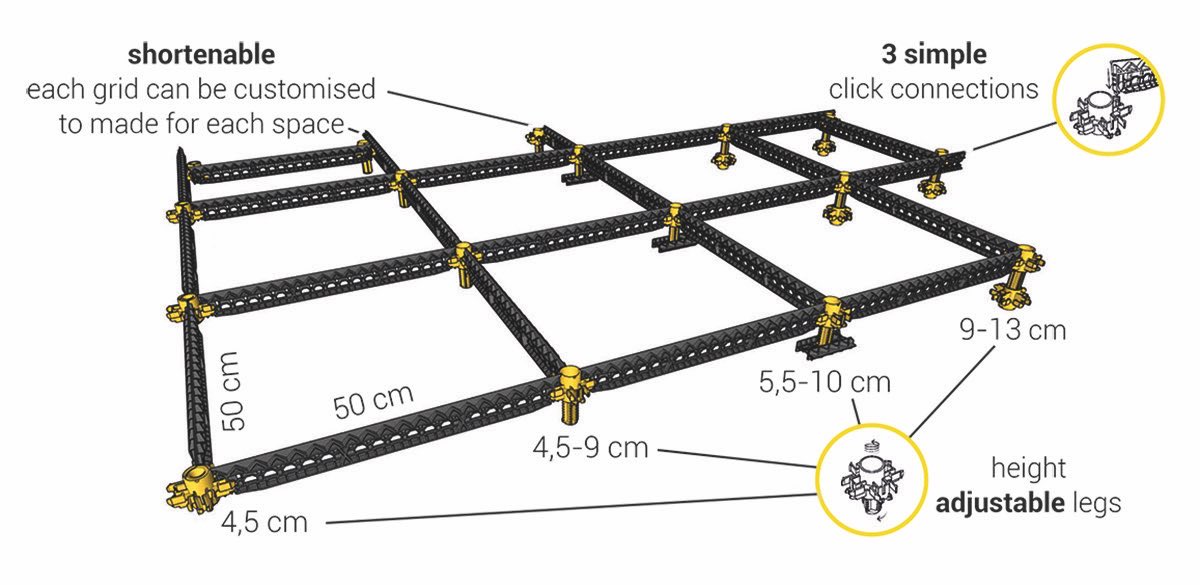
It's that simple
In 3 steps to a perfect floor
1. Places
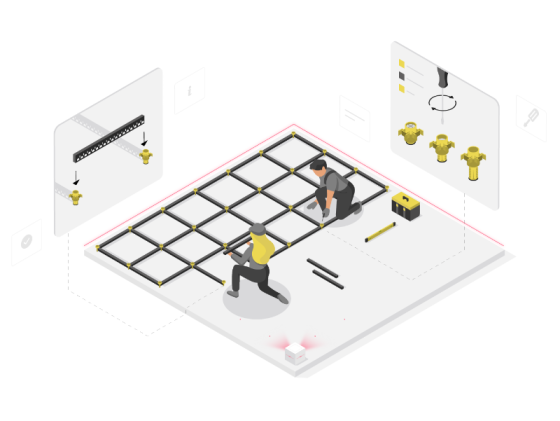
Install the modular grid system with height-adjustable legs. Super easy to level.
2. Completing
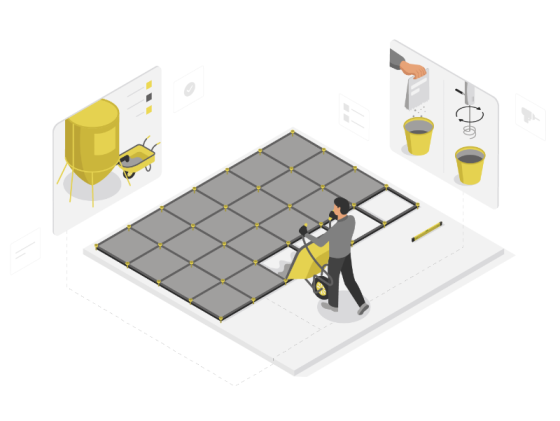
Choose between screed, insulation screed, drainage mortar, or dry fillers. Tile directly or lay OSB first.
3. Smoothing
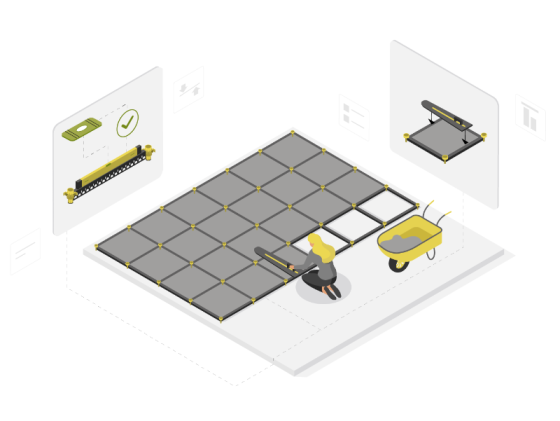
While leveling, you can effortlessly follow the height of the Staenis grid. A perfectly level result is guaranteed.
Installation video
How to install the StaenisGrid in your space
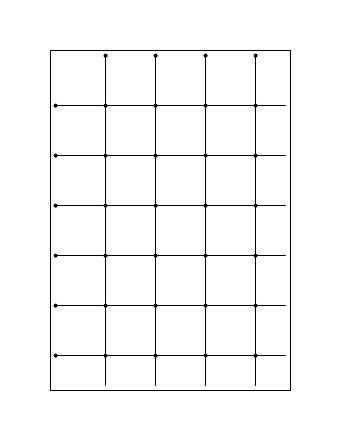
Low fill: You can only apply this low fill rate when using screed as a filler. Due to the lack of supports at the connection to the walls, you need to support the slats at the walls with screed.
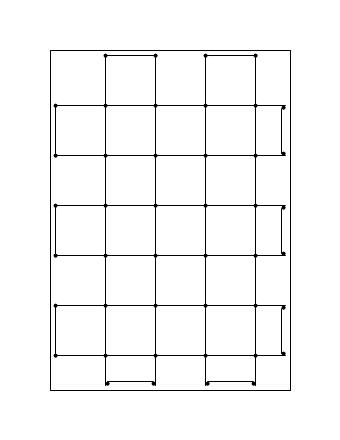
Standard filling: This standard fill rate can be used for screed, drainage mortar, and tileable insulation screed. Consumption is slightly higher, but it ensures easier installation.
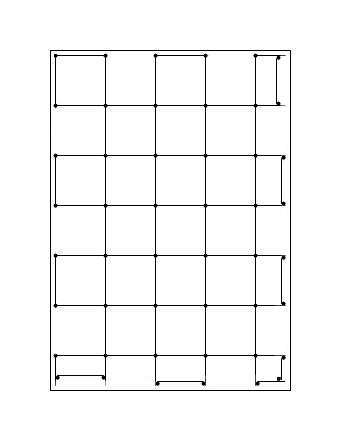
High fill: This high fill rate is used when OSB is placed on the Staenis floor structure. This way, you have joists on which you can screw and you have support in the corners.
Specifications
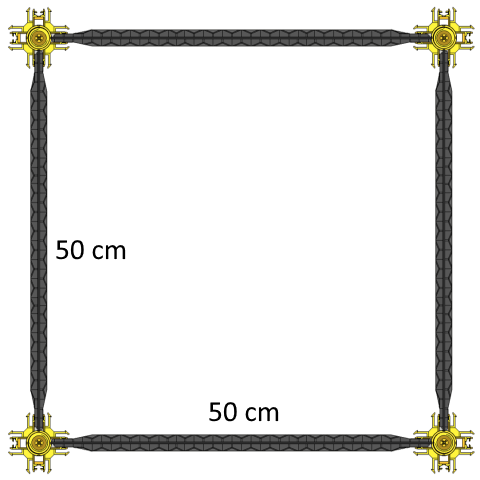
Modular reinforcement grid of 50 x 50 cm, consisting of battens and legs.
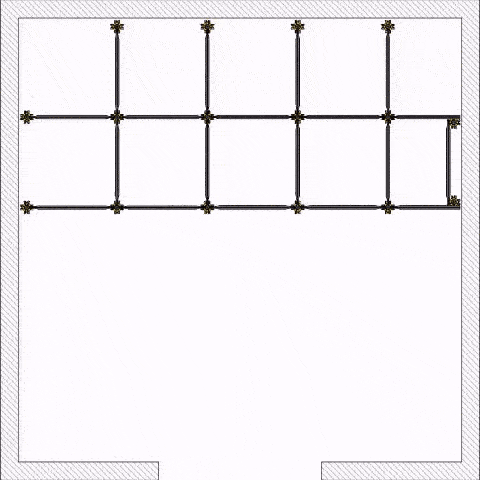
Place the StaenisGrid, adjust its height, and complete your floor construction row by row.
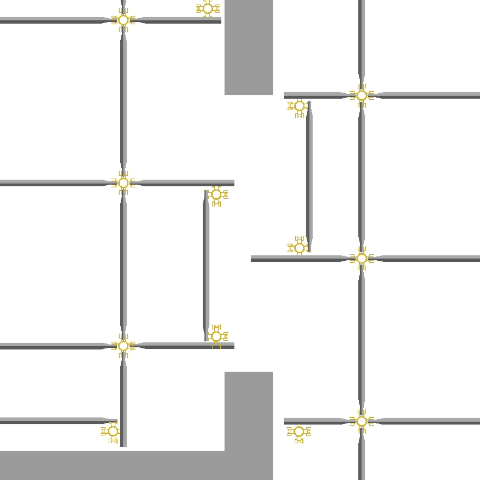
For openings of less than 110 cm or for connections to walls, you can easily shorten the grille.
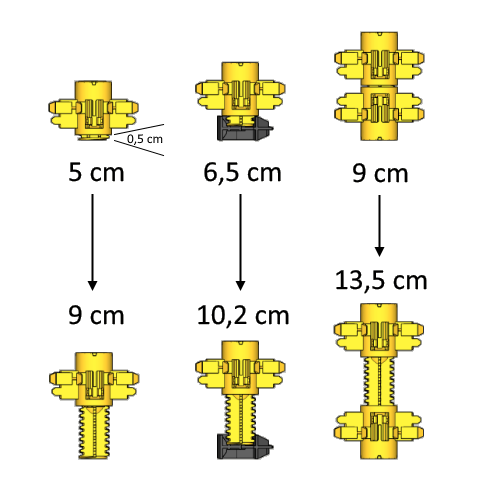
Adjustable in height from 4.5–5 cm to 13.5 cm.
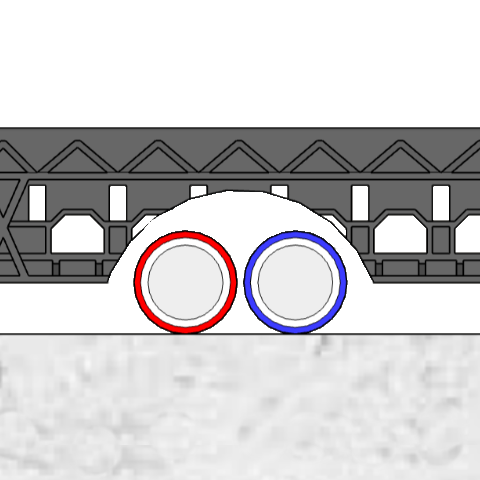
The slat is 4.5 cm high and can be locally cut down to a height of 1.5 cm.
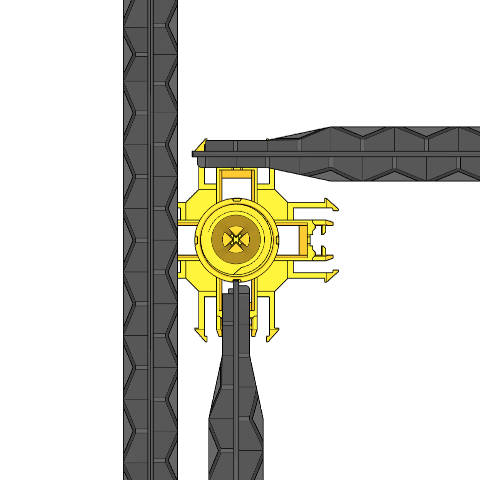
The StaenisGrid has 3 types of click systems, making it modular.
Frequently asked questions
The average number of pieces depends on the chosen filler and grid:
- For screed, stabilized screed, insulating screed, drainage mortar and screed grid, you need an average of 8 battens and 5 legs per square meter.
- For load-bearing fillers and with the fibre-reinforced drying floor grid: you generally need 8 slats and 5 legs per square metre.
- For non-load-bearing fillers (such as glass wool, cork granules, EPS beads or no filler) and with the fibre-reinforced drying floor grid: you need a minimum of 8 slats and 5 legs per square metre (more corner connections result in higher consumption).
For non-load-bearing fillers, you can also replace the fiber-reinforced dry floor grating with the screed grating, but because this screed grating is less load-bearing, you will need to add 8 additional yellow legs per square meter (a total of 13 yellow legs and 8 slats per square meter).
In case of doubt or extremely heavy loads, we recommend providing additional legs or reinforcing the legs (for example with cement or lime mortar).
For the fibre-reinforced drying floor grid -> Use the yellow screed extension legs to adjust the height from 9 to 13 cm without loss of load-bearing capacity.
Always round up when ordering to ensure you don't run out of stock during installation.
This is perfectly possible. You can always freely view the StaenisGrid during opening hours in the showrooms (only in Aarschot, Roeselare, Temse, Maldegem) of Sack self-build.
Note: here you cannot receive additional information about the system, but you can view and touch the different floor constructions.
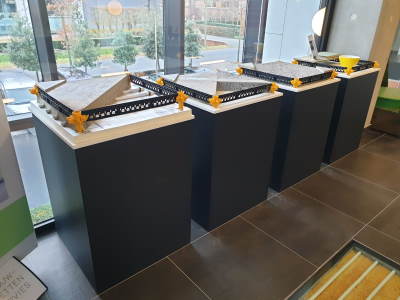



The slat is 4.5 cm high and can be locally cut down to a height of 1.5 cm. Think, for example, of allowing utilities to pass through.
If desired, you can reinforce the cut batten with some mortar.
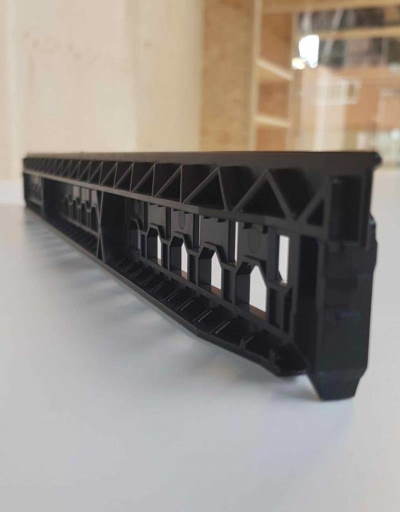
The leg is 4.5 cm high. This is the minimum height required for the smooth installation of the StaenisGrid.
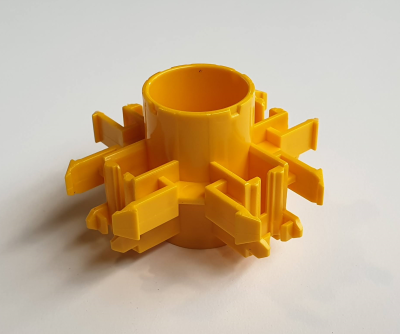
The adjustment screw is 5 cm high. This part can also be trimmed by 5 mm to adjust the leg from 4.5 to 5 cm.
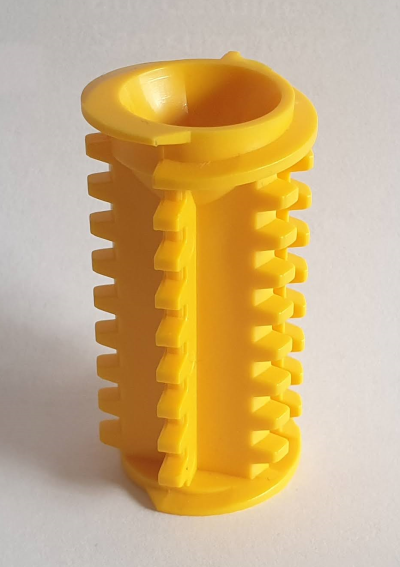
The extension leg is exactly the same as the leg but turned upside down. This allows you to adjust the StaenisGrid to a higher level.
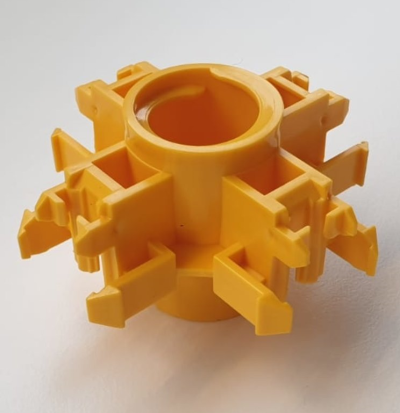

If you still wish to level a height that is higher than 13 cm, you can solve this by placing leftover insulation boards or leftover tiles under the legs. Make sure that these form a stable and pressure-resistant base.

A box of StaenisGrids of 5 m² contains 40 slats and 25 adjustable legs. 60 x 40 x 5 cm (L x W x H)
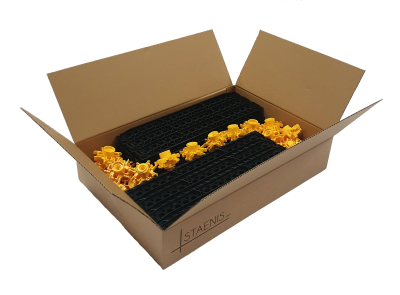
A box of StaenisGrids of 10 m² contains 80 slats and 50 adjustable legs. 60 x 40 x 10 cm (L x W x H)
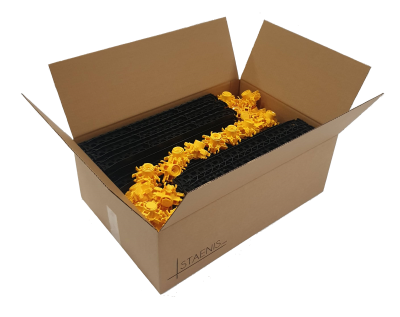
In a box of StaenisGrids of 20 m² there are 160 slats and 100 adjustable legs. 60 x 40 x 20 cm (L x W x H)
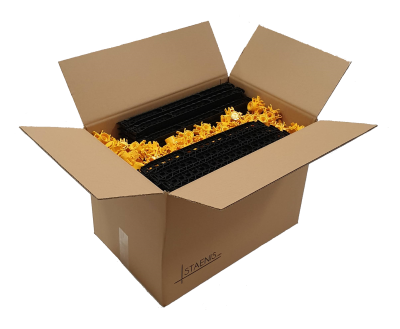
In fact, it is possible to shorten a slat at any distance in order to connect to the walls. This can be done with a hacksaw or a cutting disc. Once the slat has been shortened, you can click a StaenisLeg onto the side of the StaenisSlat.

The StaenisGrid also serves as reinforcement in the screed. The 50 x 50 cm dimension was tested, commissioned by Staenis, by Ghent University and the BBRI, and they indicated that this showed the best results.
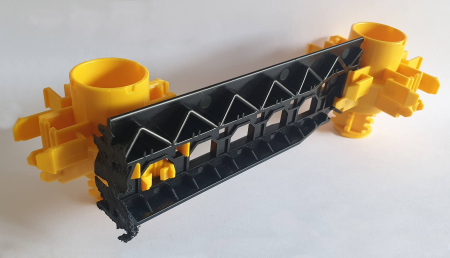

Below you can find around 35 layout plans of the Staenis grid.
Feel free to open a photo in a new tab to make the photo larger.
Place the StaenisGrid at the correct height and location in the shower. Make sure it is firmly positioned and ready for further processing.
For a shower 90 cm wide, place a box of 50x50 cm in the middle of the shower. Use half slats of 20 cm to make the connection with the walls.
Use screed at the legs to fix the grid. This ensures stability before applying the full screed.
Ensure a slope of 1.5 to 2%, depending on the roughness of the tile surface.
After curing, you need to apply waterproofing in the form of a membrane or spreadable paste. For example, you can use Schluter Kerdi-TS/200 on the side of the shower tray for 100% secure waterproofing.
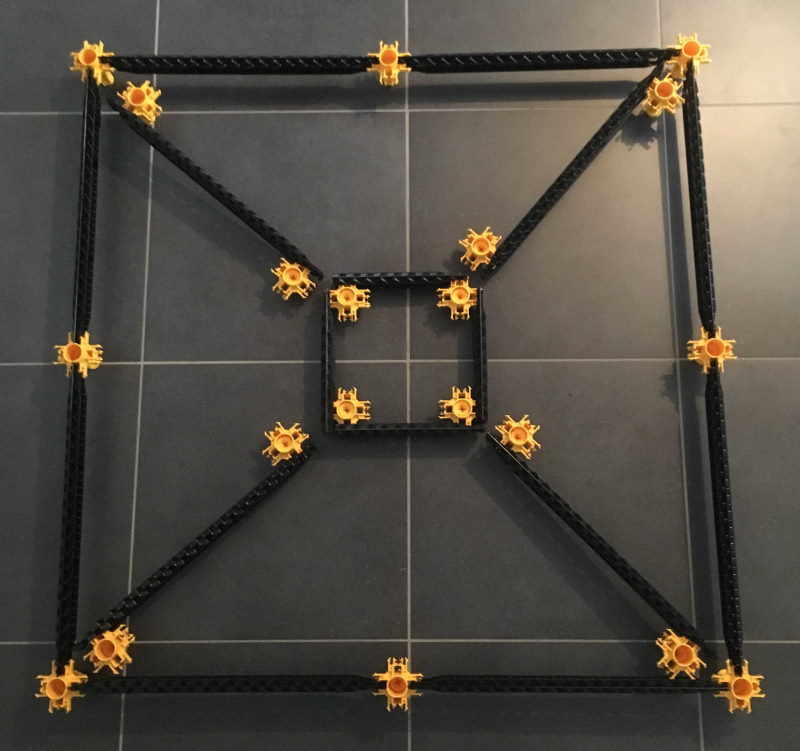
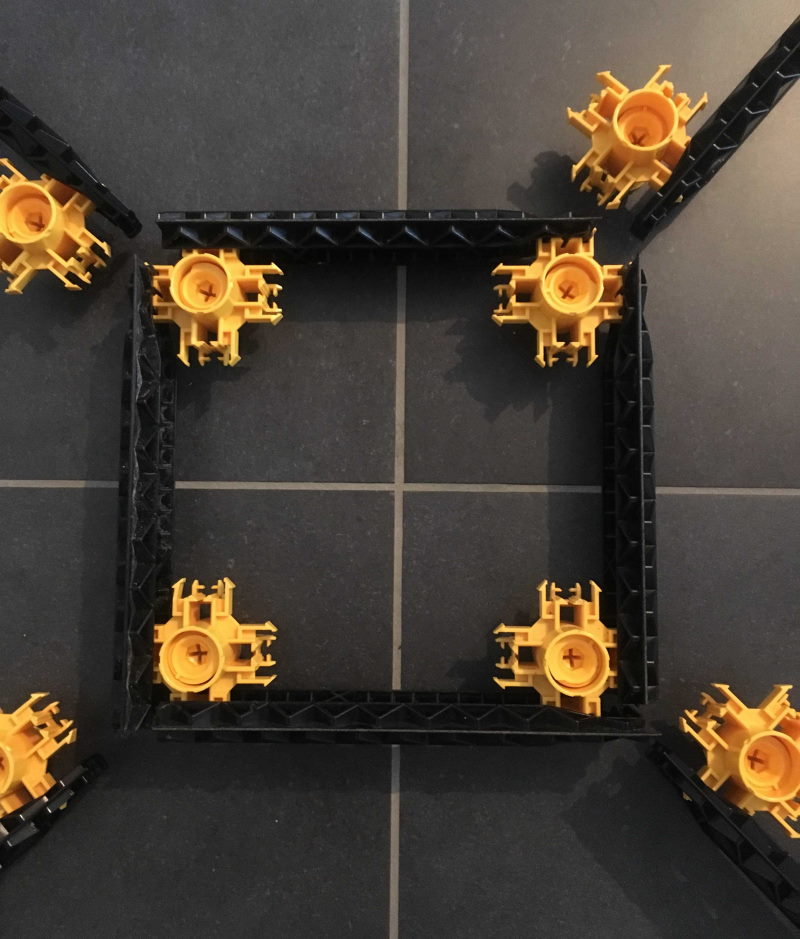
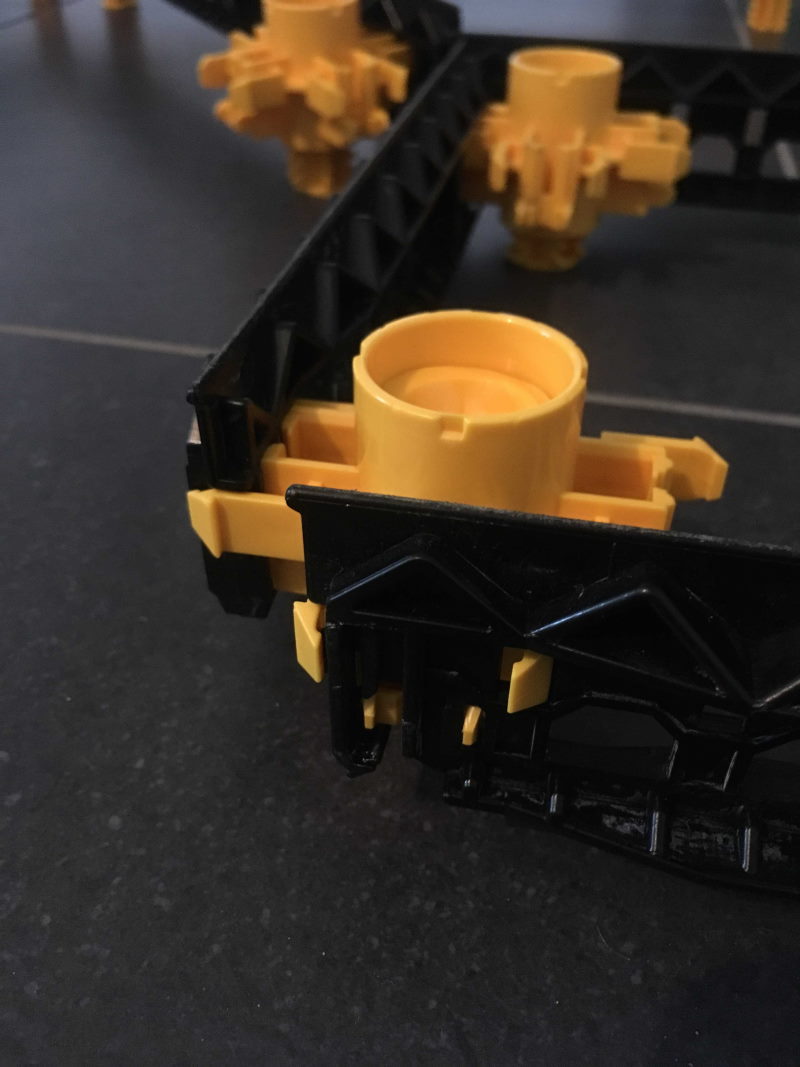
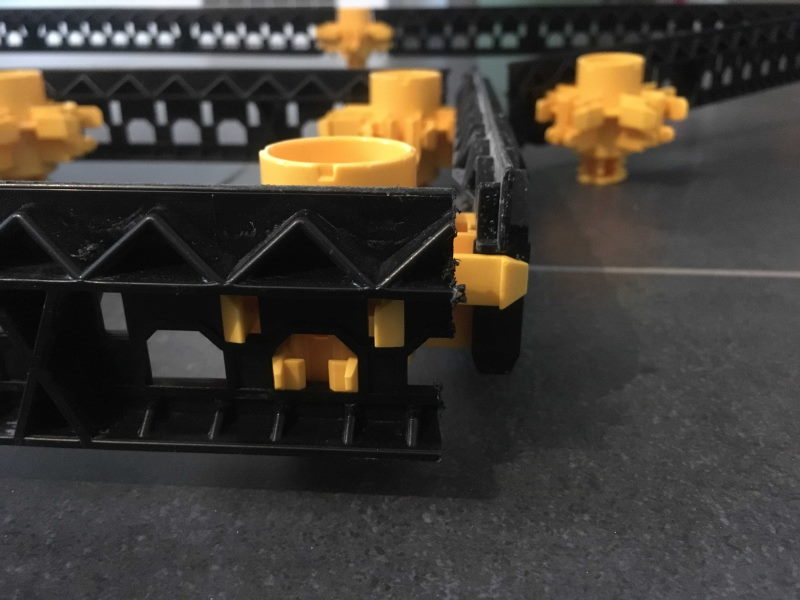
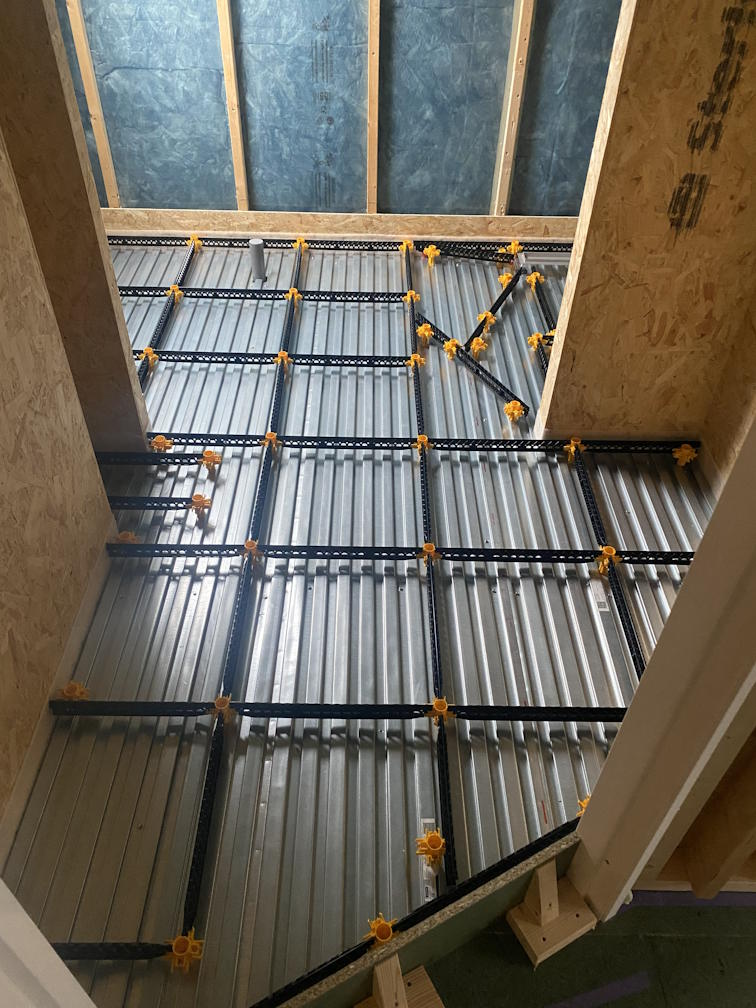
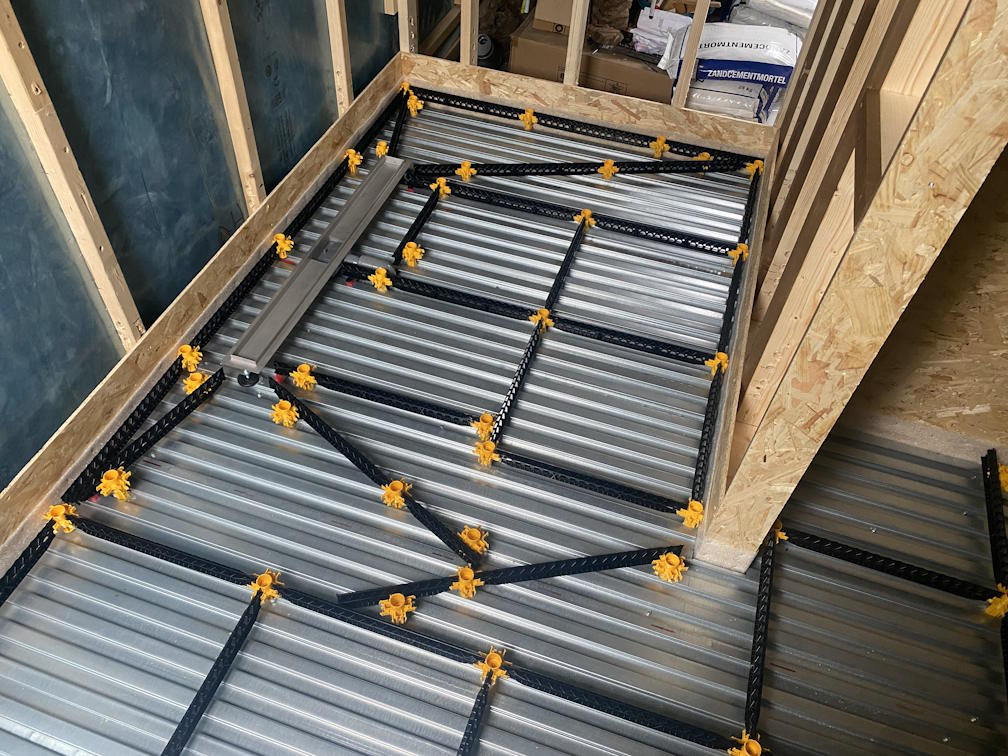
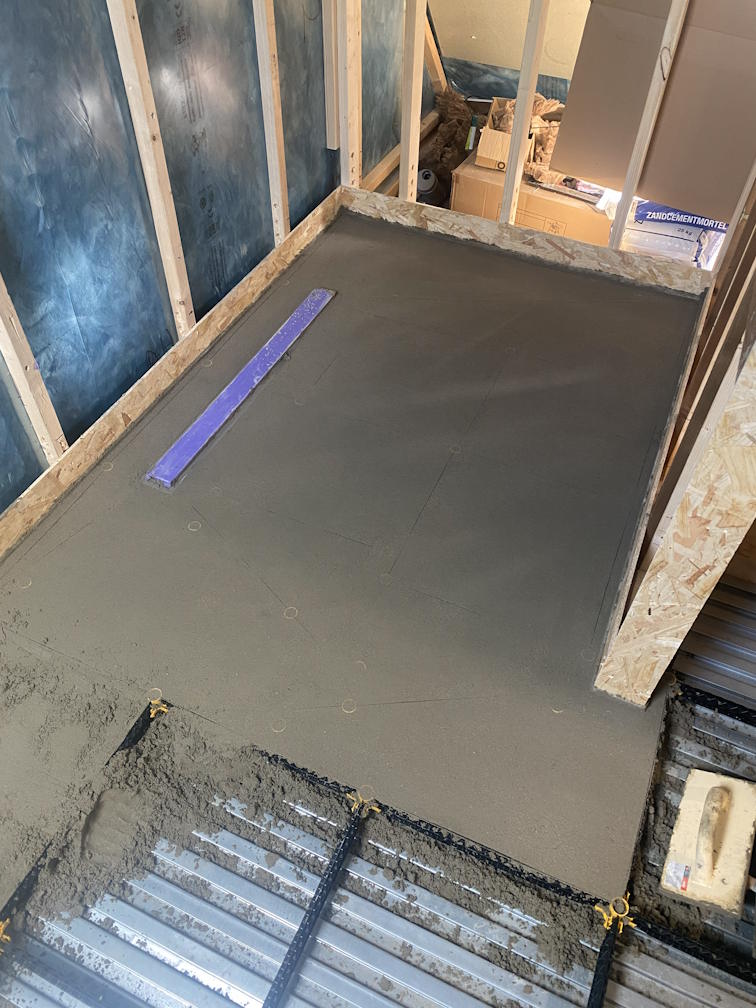
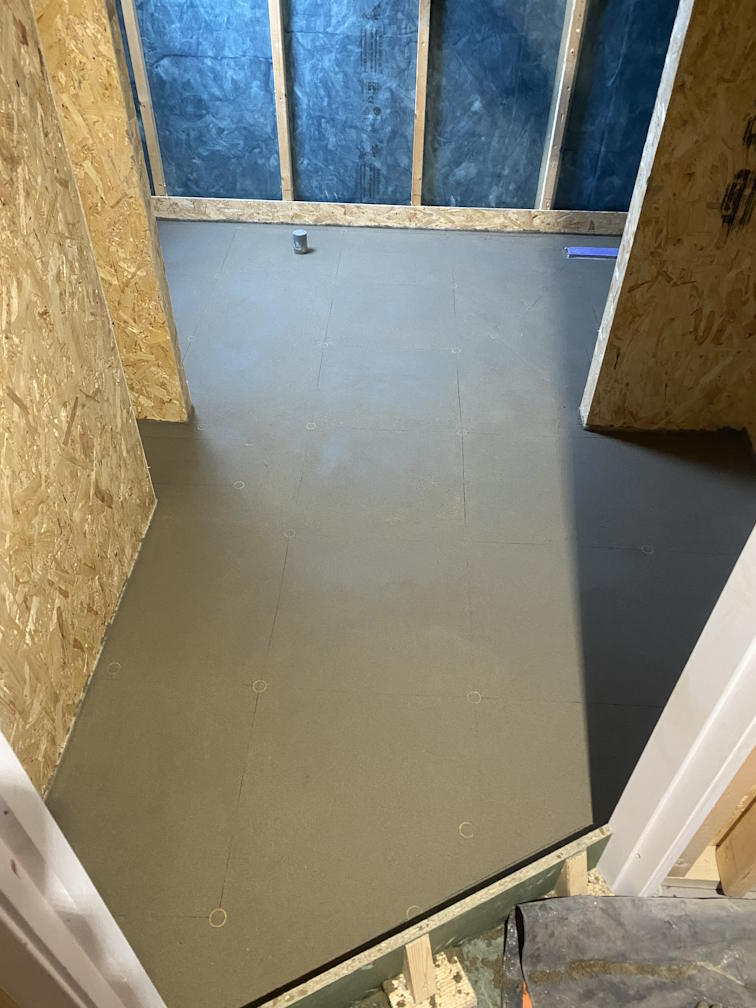
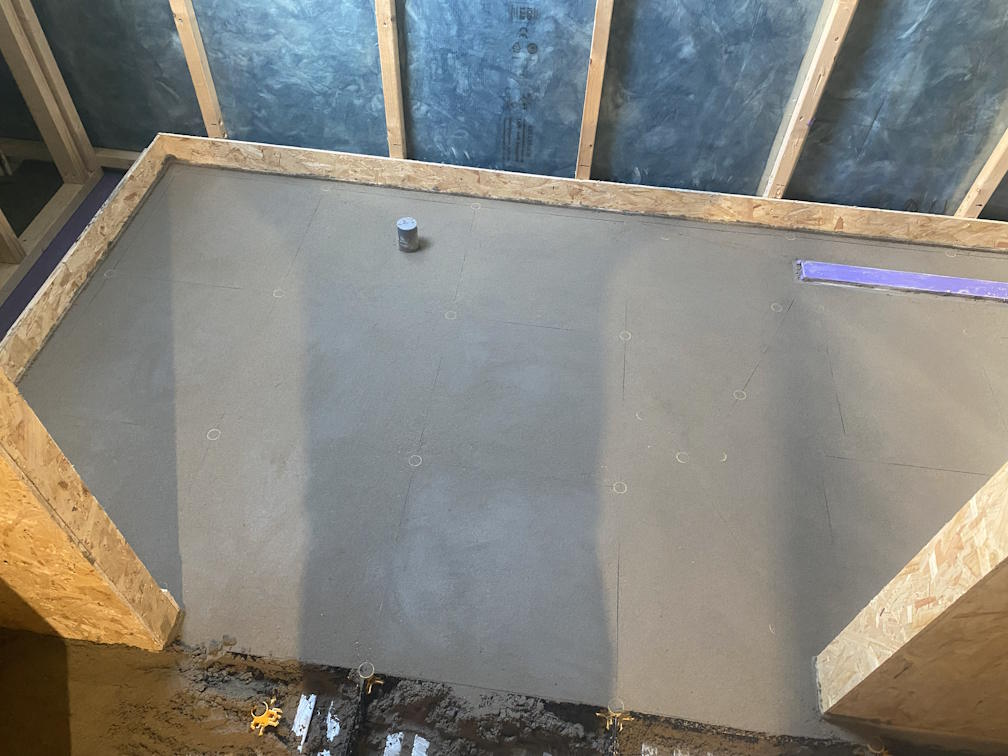
The StaenisGrid has been extensively tested at Ghent University, together with the BBRI. If you would like to review these test results, feel free to send us an email and we will send them to you.
The system has been extensively tested at Ghent University and inspected by the WTCB. As a result, we can demonstrate through tests that a floor structure with the StaenisGrid excels in quality and ranks among the top of the most high-quality floor structures. This is necessary for contemporary floor structures with thick insulation packages and special floor finishes.
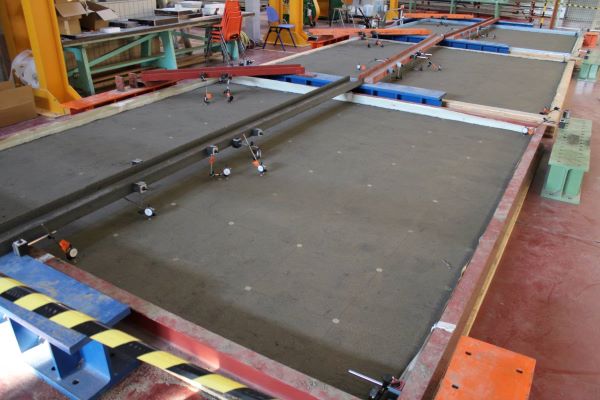
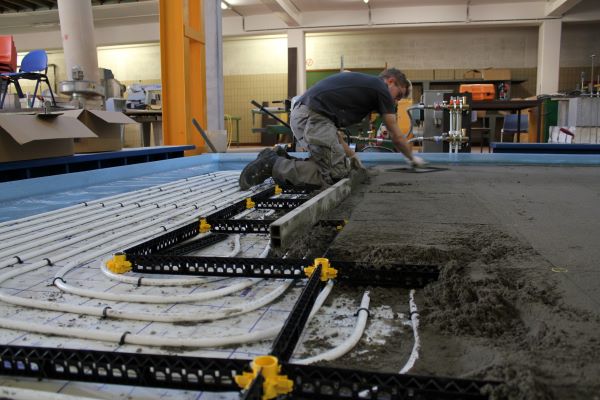
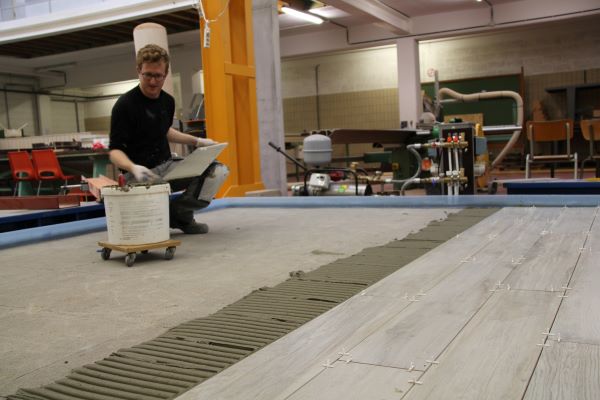
Yes, that is perfectly possible. Through our StaenisWebshop, you can purchase a float and screed trowel (plastering trowel) that are needed for installing your floor structure.
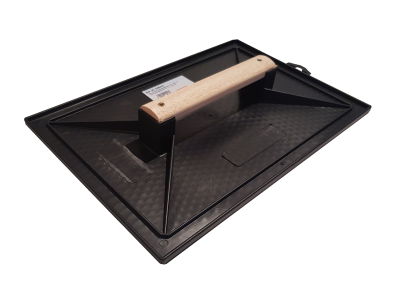
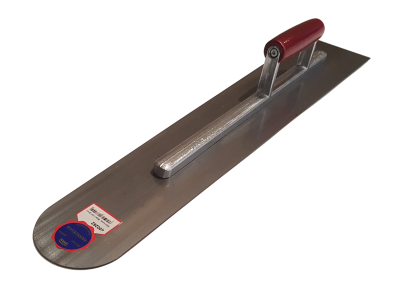
Yes, insulation screed and cellular concrete granules can be shipped, but expect shipping costs to quickly amount to several hundred euros. Feel free to ask us for a customized quote.
To avoid this problem, we recommend building the StaenisGrid row by row. This way, you prevent being unable to pass with your wheelbarrow and also reduce the risk of tripping over the grid.
- Place a row of StaenisGrids.
- Adjust the StaenisGrid to the correct height.
- Fill the Staenis grid with the filler.
- Level the screed on top of the mesh.
- Repeat until the entire area is finished.
- Place all StaenisGrids in the room.
- Adjust all StaenisGrids to the correct height.
- Fill the Staenis grid with the filler.
- Level the screed on top of the mesh.
- Repeat until the entire area is finished.
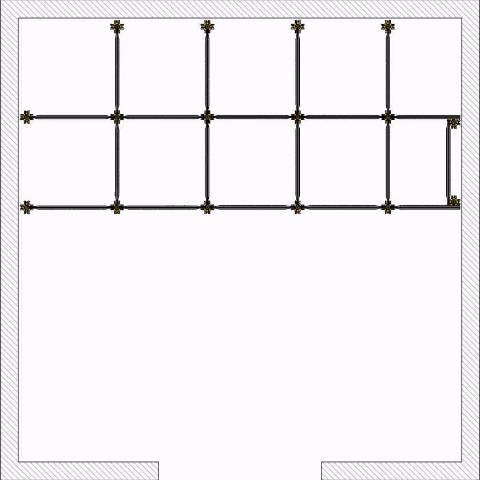
You can also lay out the entire grid and adjust it to the desired height. Then, remove a row of slats so you can pass through with your wheelbarrow.
Load capacity per yellow Staenispoot: 100 kg
Load-bearing capacity with 5 yellow Staenis legs (for load-bearing fillers): 500 kg/m²
Load-bearing capacity with 13 yellow Staenis legs (for non-load-bearing fillers): 1300 kg/m²
Load capacity per green Staenispoot: 300 kg
Load capacity with 5 green Staenis legs (for dry fillers): 1500 kg/m²
In addition to the load-bearing capacity of the StaenisGrid, you also need to take into account the load-bearing capacity of the infill material.
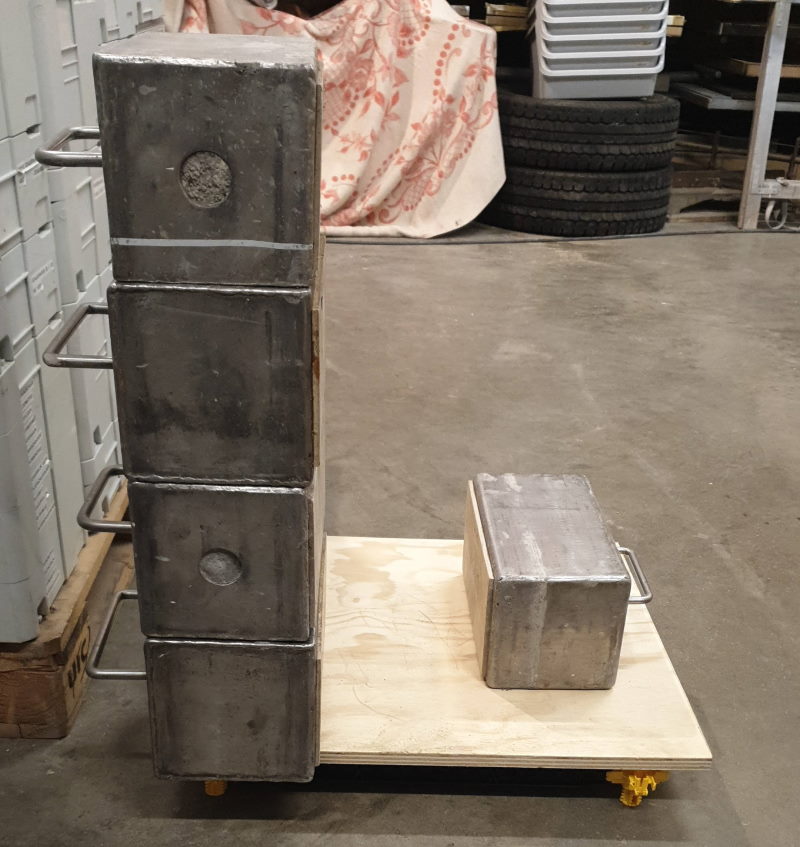
- Cages of 50 cm x 50 cm
- Slat: 47 (L) x 2 (W) x 4.5 (H) cm - PP (polypropylene)
- Leg: 7.5 (L) x 7.5 (W) x 4.5 (H) cm - PP (polypropylene / ABS)
- Adjustment screw: H: 5 (H) cm ⌀ 2.5 cm - ABS
- Grid remains permanently present in the floor.
-
Slats can be shortened
- Each grid can be made to measure for any space
-
Different installation methods possible:
- Grids can be built row by row
- Schedules can be posted in advance
- A slat can also be locally cut out to allow utilities (electricity, plumbing,...) to pass through and to maintain the 4.5 height.
- For the easy installation of a screed/sand-cement floor, insulation screed or insulation concrete, drainage mortar, dry fillers such as leveling granules or aerated concrete, ... with a minimum height of 4.5 cm and a maximum height of 9 cm. (9 to +13 cm is also possible by attaching a second leg upside down under the first leg or by placing screed, wood, or insulation under the foot)
- To be installed indoors on load-bearing substrates, such as: concrete slabs, prefab elements, insulation boards and sprayed PUR insulation, reinforced wooden subfloor.
- To be placed outdoors on open ground or as an ideal draining solution on a concrete slab.
In any case, you always start by placing the walls first. Afterwards, you can install and finish the floor structure for each room.
The reason for this is to acoustically separate the rooms from each other. For example, if you first install the floor and then build the walls on top, the sound from one room can very easily transfer to the adjacent space.
A second reason for this is that it is impossible for us to estimate what the walls will be made of (wood, metal studs,...) and how much this would weigh on the floor.
That is why we always recommend installing the walls first, and then installing the floors in the created spaces. This is also standard practice with screed floor constructions.
Optionally place edge insulation between the floor structure and the wall to achieve even better acoustic performance.







